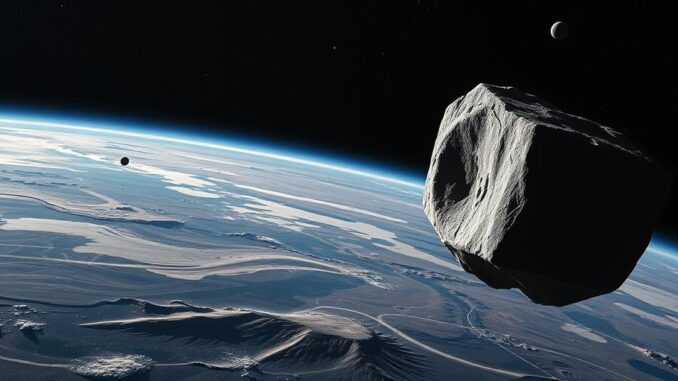
Summary
NASA’s Psyche mission has experienced a pressure drop in its xenon fuel line, causing the thrusters to shut down. Engineers are investigating the cause and may switch to a backup fuel line. The mission remains on track to reach the asteroid Psyche in 2029.
Ensure your data remains safe and accessible with TrueNASs self-healing technology.
** Main Story**
Okay, so NASA’s Psyche mission, the one heading to that metal-rich asteroid 16 Psyche, hit a bit of a snag. Back in April, they had a pressure drop in the xenon fuel line, which, as you can imagine, triggered an automatic shutdown of the thrusters. Now, I know what you’re thinking: disaster! But here’s the thing; it’s a fantastic example of why having backup systems in space exploration is so absolutely vital. You just never know what’s going to happen out there.
And while the team’s digging into what caused the pressure drop, the good news is the mission was designed with redundancy in mind. Basically, it’s got a backup fuel line, ready to go, to keep everything on track. Think of it as having a spare tire for your spacecraft – you hope you won’t need it, but you’re incredibly grateful when you do.
Redundancy: Space Mission’s Safety Net
Space, let’s face it, is not exactly a forgiving place. These missions are operating millions of miles away; therefore, we have to anticipate the unexpected. Redundancy is the name of the game, so including backup systems is absolutely key. And the Psyche mission? It’s a prime example of this. Should one line fail, which, let’s be honest, they sometimes do, it can seamlessly switch to the other. I mean, it’s like having a co-pilot ready to take over. I heard a story of a team once who forgot to add a backup system, and that was a disaster; I don’t think they ever lived it down. This foresight gives engineers time to really get to the bottom of the issue without throwing the whole mission off course. It’s crucial when things go sideways – and, trust me, they often do.
Xenon and Psyche’s Ride
Psyche’s using solar electric propulsion, a super-efficient system that’s perfect for these long-haul journeys. Basically, solar panels generate electricity, which powers these four electric thrusters. The thrusters work by shooting out charged xenon atoms; it’s a gentle, but constant thrust. The fuel line pressure is obviously important, but its crucial for optimal thruster performance. The pressure drop, down to 26 psi from 36 psi, sounds small but compromised the thrusters. As a result, they were shut down automatically. It just goes to show how much precision goes into space travel and I think we often forget that, don’t you?
Mars Flyby, Asteroid Arrival
But don’t worry, even with this hiccup, the Psyche mission is still on schedule. It’s about 148 million miles from Earth and it’s planned to swing by Mars in the spring of 2026, using the planet’s gravity to slingshot it toward the asteroid belt. Think of it as a cosmic boost! Now, the team needs to fix the fuel line issue by mid-June, and that is the deadline. It sounds like a squeeze, but with a backup system in place, they’re pretty confident about it. Psyche is scheduled to arrive at the asteroid 16 Psyche in 2029, and spend almost two years orbiting and studying it.
Why 16 Psyche Matters
The asteroid 16 Psyche is a really interesting opportunity. It’s like looking at the exposed core of a planetesimal, one of those early building blocks of planets. Its high metal content is what makes it stand out; normal asteroids are either rocky or icy. Psyche is going to analyze the asteroid’s composition, magnetic field, and how its mass is distributed. All of that is very helpful for understanding how planets are formed. The planets in our solar system, and Earth. So, the data Psyche gathers will advance our knowledge of planetary evolution and these hidden planetary cores which we can’t usually get a good look at. Isn’t that amazing? It really is.


Given the reliance on xenon for propulsion, what considerations are in place to manage the resource constraints of xenon, both for this mission and potential future deep-space explorations?
That’s a great point! The availability of xenon is definitely a key consideration. NASA is exploring ways to improve the efficiency of electric propulsion systems and potentially use alternative propellants for future missions. Resource management is crucial for sustainable deep-space exploration!
Editor: StorageTech.News
Thank you to our Sponsor Esdebe
A spare tire for a spacecraft! I love that analogy. But if the backup fuel line also throws a wobbly, do they have a *really* long tow rope back to Earth? Asking for a friend… who may or may not be piloting a spacecraft in the future.
That’s a great question! While a tow rope is out of the question, engineers build in multiple layers of redundancy and contingency plans. For critical systems, there are often backups to the backups! Let’s hope your friend has a smooth flight regardless.
Editor: StorageTech.News
Thank you to our Sponsor Esdebe
A spare tire for a spacecraft… ingenious! But if asteroid Psyche is mostly metal, wouldn’t a magnetic tow cable be more effective? Just spitballing ideas for future missions.
That’s a really interesting thought! A magnetic tow cable is a creative solution. The challenge lies in generating a strong enough magnetic field over that distance and ensuring precise control for maneuvering in space. Definitely some fascinating engineering hurdles to consider for future exploration techniques!
Editor: StorageTech.News
Thank you to our Sponsor Esdebe